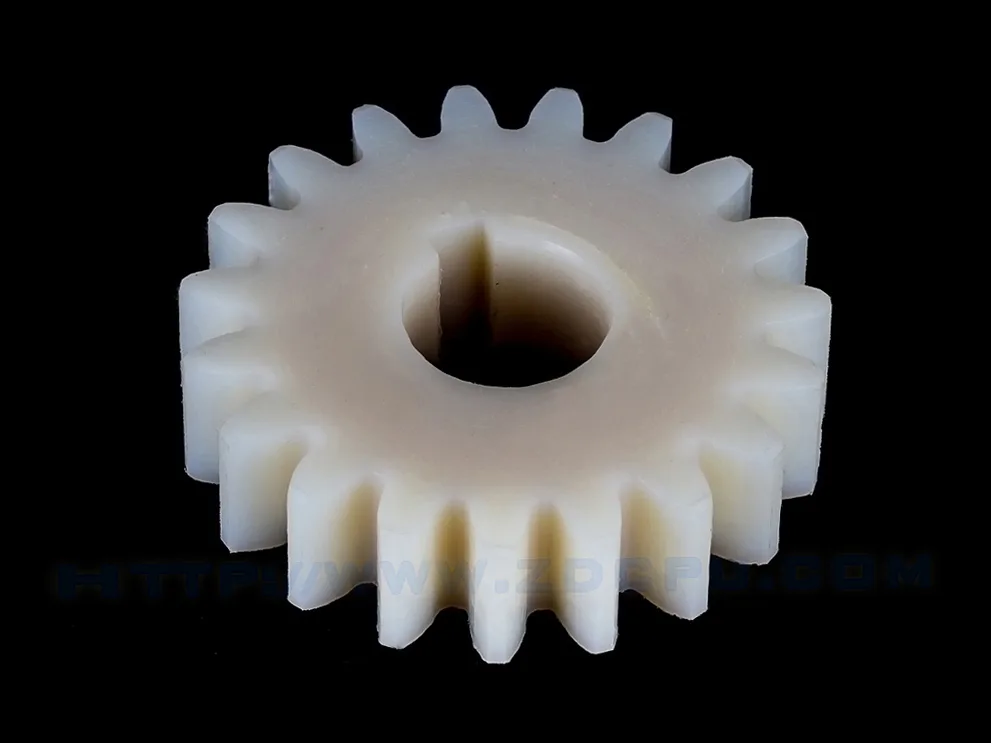
Home » POM

POM
Material Type
Plastic
Material Full Name
Polyoxymethylene
Process Compatibility
Injection Molding, CNC Machining
List of Plastic Material
List of Elastomer & Rubber Material
List of Metal Material
POM Description
Price
$$$$$
Strength
High stiffness, excellent mechanical properties, good dimensional stability, and low friction coefficient.
Weakness
Poor resistance to acids and bases, limited resistance to high temperatures, and challenges in achieving high-quality surface finishes.
Common Application
Gears, pumps and pump impellers, fan and blower blades, automotive switches, electrical switch components, buttons, and knobs.
POM Properties
Polyoxymethylene (POM), also known as acetal or Delrin, is a high-performance engineering thermoplastic. It has a semi-crystalline nature, known for its exceptional mechanical properties and versatile applications.
Properties at a Glance
*Pease note: The following material properties are for reference only. Actual values may vary depending on the selected material brand.
| Property | Metric | English |
|---|---|---|
| Density | 1.41-1.43g/cm³ | 0.051-0.052 lb/in³ |
| Shore Hardness D | 80-95 | 80-95 |
| Min Temp. Air | -40°C | -40°F |
| Max Temp. Air | 80~105°C | 176-221°F |
| Flammabilitiy, UL94 | HB | HB |
| Elongation at Break | 15~75% | 15~75% |
Chemical Properties
- Excellent resistance to many chemicals, including solvents, fuels, and oils.
- High resistance to hydrolysis.
- Good resistance to acids and bases.
- Limited resistance to strong acids and oxidizing agents.
How Additives Improve POM Properties
Various additives can be incorporated into POM to enhance its properties:
- Lubricants: Improve wear resistance and reduce friction.
- Reinforcements (such as glass fibers or carbon fibers): Enhance strength and stiffness.
- Impact modifiers: Increase toughness and impact resistance.
- UV stabilizers: Protect against degradation from UV radiation.
Adding additives to POM formulations can sometimes affect other properties of the material. For example, while flame retardant additives can improve fire resistance, they may also alter properties such as mechanical strength or thermal stability. Therefore, careful consideration is necessary to ensure that any changes do not compromise the overall performance of the POM.
Get Custom POM Parts with Zhongde
Can POM be recycled?
Yes, POM can be recycled. However, the recycling process for POM can be more challenging compared to some other plastics due to its high melting point and resistance to degradation. Recycling POM typically involves mechanical recycling methods, such as shredding and reprocessing, rather than chemical recycling.
What are the types of POM material?
POM materials primarily come in two types: copolymer and homopolymer. Copolymer POM offers better resistance to chemicals, while homopolymer POM provides superior mechanical strength.
Is POM stronger than nylon?
Comparing POM and nylon for strength is context-dependent. While POM generally offers higher stiffness and hardness, nylon tends to have better impact resistance and flexibility.




